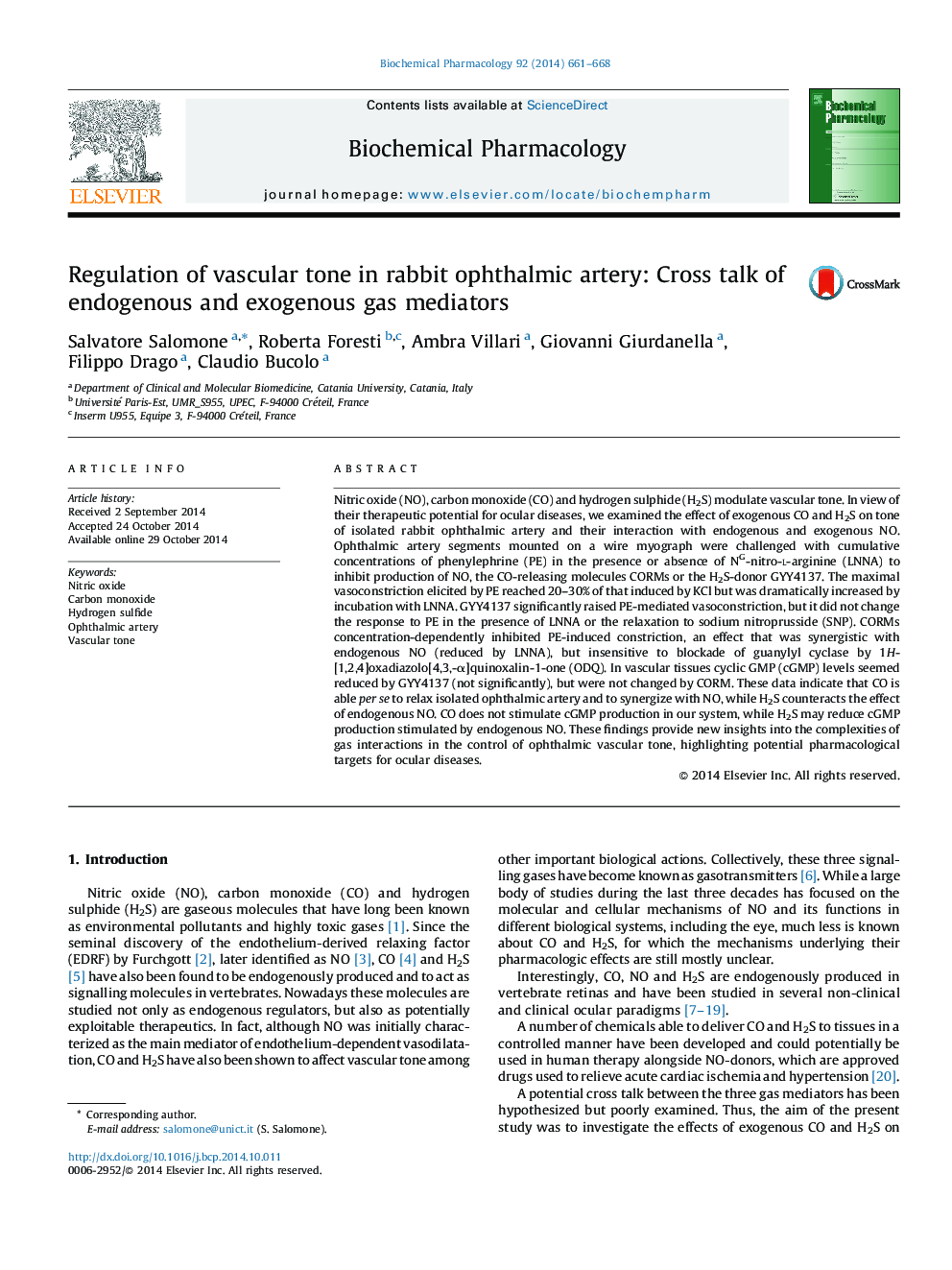| Article ID | Journal | Published Year | Pages | File Type |
|---|---|---|---|---|
| 2512200 | Biochemical Pharmacology | 2014 | 8 Pages |
Nitric oxide (NO), carbon monoxide (CO) and hydrogen sulphide (H2S) modulate vascular tone. In view of their therapeutic potential for ocular diseases, we examined the effect of exogenous CO and H2S on tone of isolated rabbit ophthalmic artery and their interaction with endogenous and exogenous NO. Ophthalmic artery segments mounted on a wire myograph were challenged with cumulative concentrations of phenylephrine (PE) in the presence or absence of NG-nitro-l-arginine (LNNA) to inhibit production of NO, the CO-releasing molecules CORMs or the H2S-donor GYY4137. The maximal vasoconstriction elicited by PE reached 20–30% of that induced by KCl but was dramatically increased by incubation with LNNA. GYY4137 significantly raised PE-mediated vasoconstriction, but it did not change the response to PE in the presence of LNNA or the relaxation to sodium nitroprusside (SNP). CORMs concentration-dependently inhibited PE-induced constriction, an effect that was synergistic with endogenous NO (reduced by LNNA), but insensitive to blockade of guanylyl cyclase by 1H-[1,2,4]oxadiazolo[4,3,-α]quinoxalin-1-one (ODQ). In vascular tissues cyclic GMP (cGMP) levels seemed reduced by GYY4137 (not significantly), but were not changed by CORM. These data indicate that CO is able per se to relax isolated ophthalmic artery and to synergize with NO, while H2S counteracts the effect of endogenous NO. CO does not stimulate cGMP production in our system, while H2S may reduce cGMP production stimulated by endogenous NO. These findings provide new insights into the complexities of gas interactions in the control of ophthalmic vascular tone, highlighting potential pharmacological targets for ocular diseases.
Graphical abstractFigure optionsDownload full-size imageDownload as PowerPoint slide
